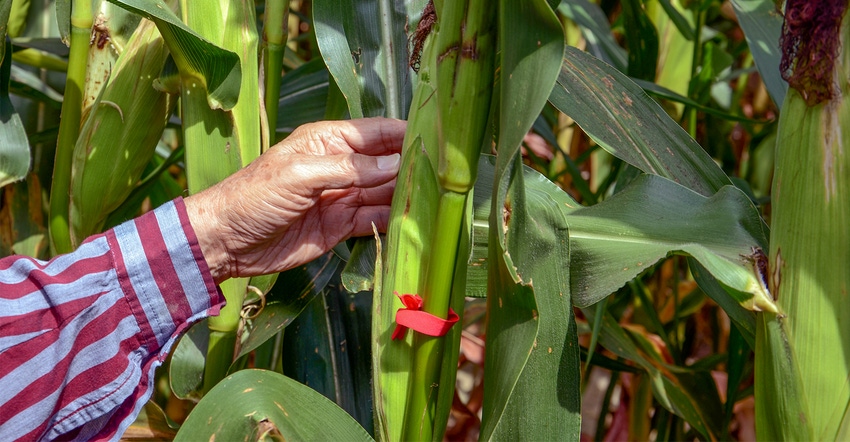
Plant breeders have inquiring minds. Once a plant breeder, Dave Nanda wanted to find out what would happen if he removed the main ear shoot from a few corn plants.
“I was confident that each stalk would attempt to put out a replacement ear from the node below where I shucked off the main ear shoot,” says Nanda, an independent consultant based in Indianapolis.
Nanda pulled the main shoots off several stalks and marked them so he could those stalks later. After about six weeks he returned, and wasn’t surprised at what he found.
“In most cases, the plant simply dropped back to the next ear shoot below the main shoot and developed that ear,” he says. “Sometimes plants develop two ears anyway, but the main ear usually gets most of the nutrients and develops the most kernels.
“In this case, with one ear removed, the plant signaled the shoot at the node below it to take charge. In most cases, I found a pretty normal ear at that second shoot where I pulled the main shoot earlier.
“It’s all about the plant’s will to survive and produce as many progeny as possible,” Nanda explains. He reminds farmers that a corn plant’s goal is to produce as many viable babies as it can. Seed from hybrid corn won’t be planted, but the plant doesn’t know that. It does what it can to produce as many viable kernels as possible.
Plant makeup
The reason Nanda found reasonably good ears that grew and pollinated even after the main shoot was destroyed is because the shoots made it out while pollen was still available. That allowed plants to produce kernels on what was originally the second ear shoot.
“A corn plant actually has the ability to send out shoots at several nodes,” Nanda says. “One plant where I pulled an ear developed a reasonably good ear from the node below where I pulled the main shoot. Then another shoot attempted to develop on the next node down.”
Apparently, pollen ran out before that ear was ready to receive it, Nanda notes. There was a small cob and silks, but the silks were still attached and not pollinated.
“We tried this experiment last year, but all we got at the second shoot below where I pulled the main ear was a nubbin,” he recalls. “That’s because we pulled the main ear shoot too late a year ago. The ear shoot below it needs time to be ready to receive pollen. Once pollen is gone, the plant misses the opportunity.”
So how many ears can a plant produce? It likely varies by hybrid, but it’s basically tied to how many nodes can send out shoots, Nanda observes. “The trick is getting those silks out while there is still pollen available.”
Corn Watch ’17 is sponsored by Seed Genetics-Direct, Washington Court House, Ohio.
About the Author(s)
You May Also Like




